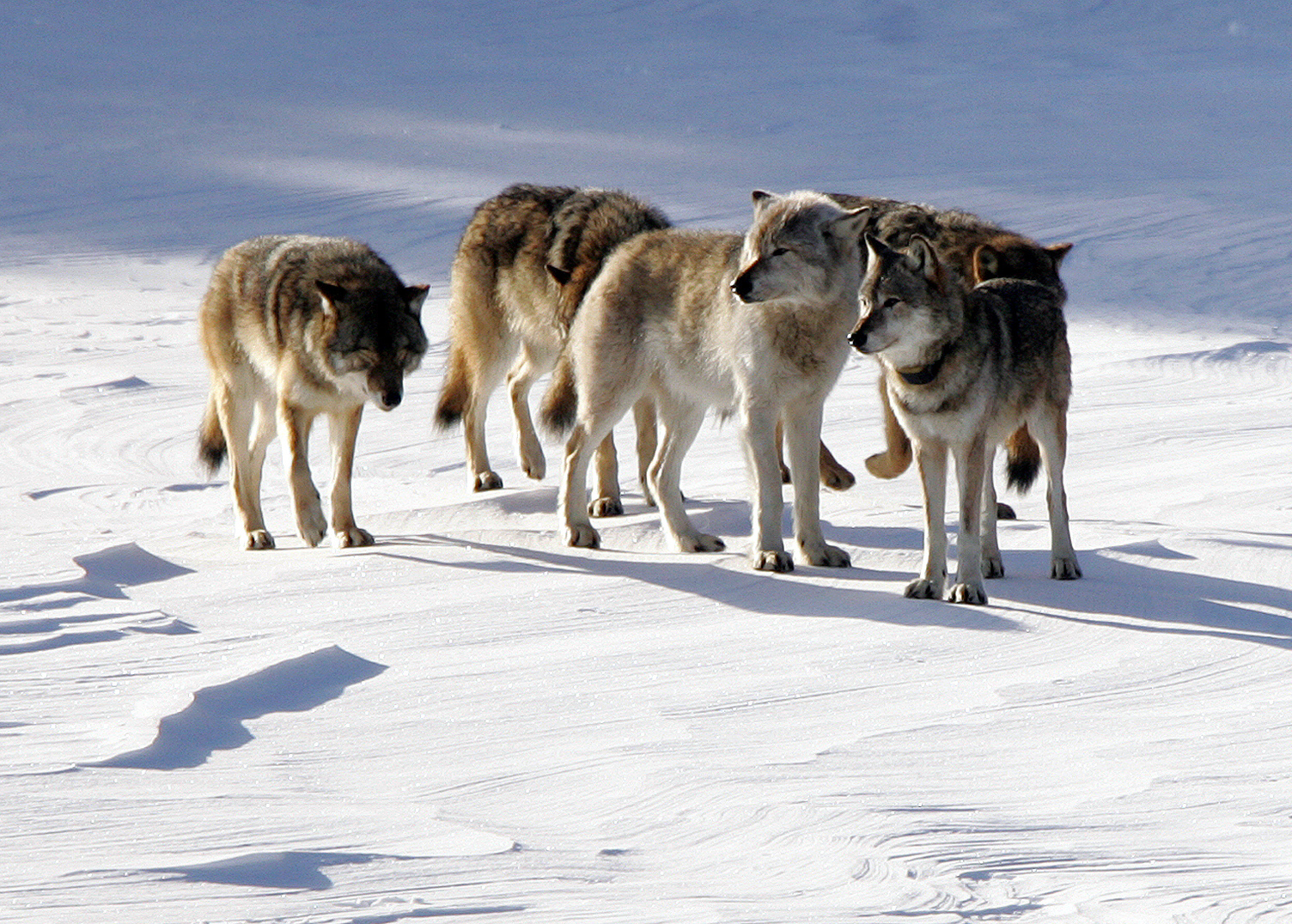Poop Reveals Immigrant Wolf on Isolated Island

The wolves of Isle Royale in Lake Superior have been studied by scientists for more than 50 years, but they're still learning new tricks. The scientists discovered a new immigrant in the population by analyzing the genes in its poop.
The scientists, John Vucetich and Rolf Peterson, of Michigan Technological University, long thought that the wolves were an isolated group, because no other wolves could make it onto the island, located in Lake Superior. The wolf, called "The Old Gray Guy" crossed an ice bridge onto the island in 1997. [Photo of the immigrant wolf]
"Before this discovery, the Isle Royale wolf population had been considered completely isolated since it was founded in the late 1940s," Vucetich said in a statement.
Because Old Gray Guy was larger than many of the other wolves on the island, he became the alpha male of the Middle Pack, one of three packs on the island. As he's aged, his coat has become lighter, something not normally seen in Isle Royale wolves. [500 Cutest Animals]
The group followed Old Gray Guy using his poop. They analyzed the DNA — the molecule that makes up an organism’s genetic code — from the animal's feces and found that he had several different copies of genes that the wolves originally on the island didn't. He most likely came from a geographically distinct population.
Because he brought fresh genes to the isolated population, Old Gray Guy is a perfect example of a phenomenon called "genetic rescue" — where new genes are introduced into a genetically stale population. This is important because small, isolated populations are more at risk for a loss of genetic diversity, which can make them more vulnerable to disease, for instance, and usually lead to their eventual downfall.
And Old Gray Guy did well spreading his genes. He mated first with a native female between 1998 and 2000 and then with his own daughter, born in 1998, until 2006 when the immigrant wolf died, Peterson told LiveScience. The daughter went on to mate with her son, fathered by her father, each year until she died early in 2010, Peterson said.
Sign up for the Live Science daily newsletter now
Get the world’s most fascinating discoveries delivered straight to your inbox.
Over his lifetime, Old Gray Guy had 34 offspring and now has 45 grand offspring, a number still on the rise. Even though he died, 56 percent of all the wolf genes on the island trace back to his genetic donations. After he arrived, inbreeding within the population dropped rapidly, though it quickly rose again.
Genetic rescue isn't easy to see, because these types of immigrations don't happen often in nature, especially not in a group so heavily studied both before and after the new wolf showed up. The researchers haven't seen any changes in the population since Old Gray Guy made his way onto the island, though this may be due to food shortages because of the low moose population.
Because of the food shortages and other factors, the island's wolf population is declining. There are currently only 16 wolves in the one remaining pack, and only two adult females. If they don't raise female pups, the population will most likely die off. The population has had its ups and downs over the years, consistently hovering around 20 wolves for the past few decades.
"The situation is kind of precarious," Vucetich said.
With the decline of the wolves, though, the moose on the island are holding steady, the researchers say, at more than 500 in the winter of 2010, though that figure is much lower than the 2,500 seen on the island a few decades ago. "The moose are poised for increase," Peterson said in a statement.
The low figures for the moose mean good news for the local foliage though, as plant growth is also rebounding.
The study was published in the March 30 issue of the journal Proceedings of the Royal Society B: Biological Sciences.
You can follow LiveScience staff writer Jennifer Welsh on Twitter @microbelover.
Jennifer Welsh is a Connecticut-based science writer and editor and a regular contributor to Live Science. She also has several years of bench work in cancer research and anti-viral drug discovery under her belt. She has previously written for Science News, VerywellHealth, The Scientist, Discover Magazine, WIRED Science, and Business Insider.










